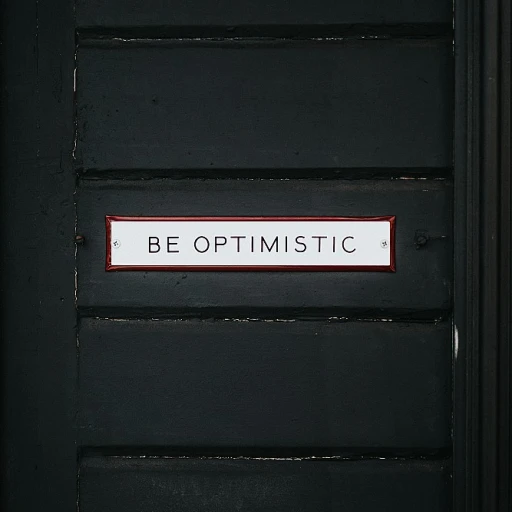
Understanding the Role of Headhunters in Executive Recruitment
Unveiling the Executive Search Process
To effectively navigate LinkedIn and connect with top headhunters, it's essential to first understand their role in executive recruitment. Headhunters, also known as executive recruiters, are professionals hired by companies to identify, attract, and place highly skilled executives in key positions. This process is strategic and involves searching for candidates with the right skills and experience to fill critical roles in the company. Headhunters have access to networks and industry insights that are often unavailable to typical job seekers. They play a crucial role in matching companies hiring with ideal candidates, thus making it easier for companies to fill executive positions efficiently. By connecting with headhunters, you increase your chances of being considered for exclusive opportunities that may not be advertised openly. Furthermore, headhunters use LinkedIn extensively to connect with potential candidates. They rely on the platform’s robust search capabilities, including Boolean search techniques, to find people who are a perfect fit for open roles. Therefore, optimizing your LinkedIn profile and ensuring it contains the right keywords is crucial to enhancing your visibility in their search results. For more comprehensive insights and strategies on advancing your C-suite career, you may want to explore C-Suite Career Strategies for Success, which delves deeper into positioning yourself for high-level opportunities.Optimizing Your LinkedIn Profile for Headhunter Visibility
Enhance Your LinkedIn Profile to Capture Headhunter Interest
Your LinkedIn profile is not just an online resume; it's a strategic tool designed to attract the attention of the right recruiters. In order to stand out in the competitive landscape of executive recruitment, optimizing your profile is a necessity. First, identify and integrate relevant keywords that align with your skills and career goals. These may include industry-specific terminologies, position-specific skills, or leadership attributes. LinkedIn’s algorithm significantly relies on these keywords during search operations, which can enhance your visibility in headhunter searches. Next, focus on the photo, headline, and summary sections. Use a professional photograph that reflects your role within a company and write a compelling headline that clearly communicates your executive position and industry expertise. The summary section is your chance to share a narrative, personalize your career achievements, emphasize your unique leadership qualities, and illustrate how these attributes can help companies achieve their objectives. Incorporate rich content such as articles, presentations, or videos that demonstrate your thought leadership and expertise. Adding these can help showcase your comprehensive understanding of industry trends and your ability to drive strategic initiatives. Regularly updating your accomplishments and endorsements helps to keep your profile relevant and demonstrates growth and recognition in your field. Headhunters often search LinkedIn for depth in an executive's career trajectory, looking for candidates who show consistent progress and adaptability. Lastly, leverage the "open to work" feature cautiously if you are seeking new opportunities discreetly. Adjust the settings to private mode so only recruiters can see this status. This enables you to signal your availability without publicly announcing it to your network. For further strategies on managing your executive career trajectory, explore additional insights in strategic career management for executives.Building a Strategic Network on LinkedIn
Establishing a Strong LinkedIn Presence
Building a strategic network on LinkedIn is an essential step in connecting with top headhunters. It amplifies your visibility and showcases your professional narrative to recruiters hiring for your dream job. To start, optimizing your LinkedIn profile is paramount. This means ensuring your profile is complete, showcasing your skills, experiences, and accomplishments effectively.
Engaging actively on the platform helps you stay on the radar of recruiters using LinkedIn to find candidates for open work positions. Consider participating in industry discussions by adding insightful comments to posts or articles related to your field. This interaction not only broadens your professional horizons but also helps you to connect with hiring managers and companies hiring within your industry.
Networking with Precision
Using tools such as Boolean search and filter search can help you find recruiters who specialize in your industry or field. There are numerous LinkedIn recruiters who regularly update their content with job search tips. These resources can be invaluable in finding people and recruiters more efficiently.
However, it's not just about digitally extending a connection request. Prior to reaching out, do some homework. Look into the profiles of the recruiters you aim to connect with and understand their work. This ensures your outreach is personalized and meaningful, demonstrating you're not just another job seeker, but someone genuinely interested in strategic opportunities.
Establishing genuine connections is crucial for executive recruitment processes, as it allows you to build trust and rapport over time. It's essential to maintain regular engagement without overwhelming your contacts. Thoughtful engagement helps find and attract the right recruitment partners who can fill positions with precision.
Strategically Leveraging LinkedIn
LinkedIn offers premium options and tools that can significantly enhance your efforts in executive search. Consider these options if you're serious about advancing your journey. Becoming acquainted with LinkedIn's user agreement can also offer insights into dos and don'ts, ensuring your efforts align with platform policies.
Finally, for leaders, the ability to strategically coordinate cadence meetings is a significant advantage. This optimizes leadership and helps maintain a consistent narrative across all your networking and profile efforts. Being diligent in these practices ensures a robust presence that attracts the attention of active recruiters, paving the way to professional opportunities that align with your leadership aspirations.
Engaging with Headhunters: Best Practices
Effective Communication and Engagement Strategies
Engaging with headhunters on LinkedIn isn't just about making initial contact; it's about sustaining meaningful conversations that could lead to potential opportunities. To bridge the gap between your aspirations and the recruiters, a strategic approach is essential. Firstly, showcase your interest and expertise through strategically engaging with headhunters' content. By liking, sharing, or adding insightful comments to their posts, you effectively highlight your presence on the platform. This approach subtly signals that you're active and invested in your professional growth, making it easier for recruiters to notice you. Building on this foundation, direct messaging becomes a pivotal step. When you find recruiters who specialize in your industry or area of expertise, a personalized, concise message can leave a lasting impression. Acknowledge their role, express your interest in learning more about opportunities within their network, and briefly introduce your profile and skills. Consider these engagement tips:- Use LinkedIn's search filters effectively to narrow down recruiters who align with your career aspirations.
- Implement boolean search techniques for a more targeted search, increasing the chance of finding recruiters relevant to your industry.
- Maintain a professional, friendly tone in communications, reflecting your personal brand and aligning with your LinkedIn profile.
- Keep your LinkedIn profile up-to-date to reflect open work status, which can attract recruiter attention.
Leveraging LinkedIn Tools for Executive Search
Utilizing LinkedIn's Advanced Features for Executive Search Success
A crucial aspect of optimizing your job search involves harnessing the full potential of LinkedIn's advanced features designed specifically for executive searches. Here’s how to make the most of these features:- Boolean Search Techniques: Leverage Boolean search commands to refine your search results. This helps you connect with the right recruiters and companies, ensuring your skills align with available opportunities.
- LinkedIn Recruiter: If available, explore LinkedIn Recruiter. This feature is particularly helpful for hiring managers and recruiters seeking to fill executive roles, and using it can give you insights into how recruiters view potential candidates.
- Keyword Optimization: Keep your LinkedIn profile keywords synchronized with those used by recruiters in job descriptions. The precise usage of terms like 'leadership', 'strategic planning', and other role-specific keywords enhances discoverability.
- Filter Search Options: Use LinkedIn’s filter options to narrow down search results to relevant industry-specific recruiters. This ensures you engage solely with those who specialize in your field of expertise.
- Open to Work Feature: Activate the 'Open to Work' option to signal to recruiters that you are open to new executive opportunities without publicizing it to your entire network, maintaining confidentiality with potential recruiters.
Evaluating Headhunter Effectiveness
Assessing the Value of Headhunters in Your Executive Job Search
Once you've optimized your LinkedIn profile and started engaging with promising recruiters, the next crucial step is evaluating their effectiveness. This assessment is essential to ensure that you're investing time and effort in connections that truly enhance your job search.
Headhunters bring unique insights and access to opportunities not always visible in regular job searches. However, it's vital to scrutinize their alignment with your career objectives. Are they reaching out to companies hiring that align with your skill set and aspirations? Are they presenting you with vacancies in your dream job categories, or merely fill-the-gap opportunities?
- Track Success Rates: Monitor how often interviews and roles suggested by your recruiter lead to productive outcomes. Frequent misalignment may hint at a mismatch.
- Feedback Quality: Industry-savvy recruiters provide constructive feedback, helping you refine your profile and presentation skills. Consider the substance of the advice they offer.
- Honest Communication: Reliable recruiters offer transparent communication. They provide realistic assessments on your profile’s marketability and do not over-promise on job prospects.
- Network Influence: Effective recruiters should open doors to connections and interviews not accessible through regular channels, providing added value to your LinkedIn strategy.
Gauge the extent to which these factors align with your job search expectations. Adopting a discerning eye when working with recruiters can help maximize your LinkedIn efforts, ensuring that you effectively connect with those who truly propel your career forward. In doing so, you'll navigate the job search landscape with confidence, equipped with a robust network of advocates in recruiting positions.














